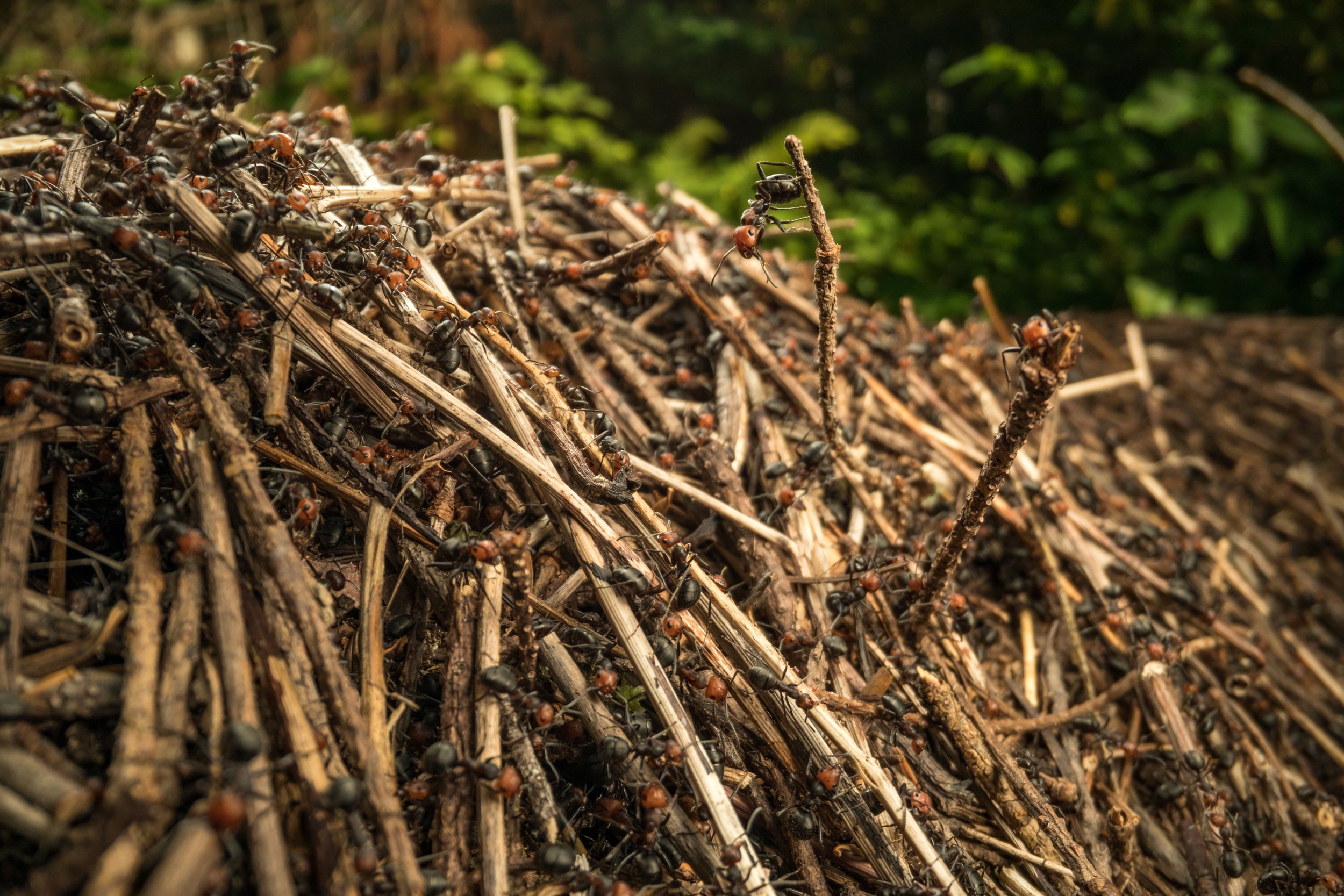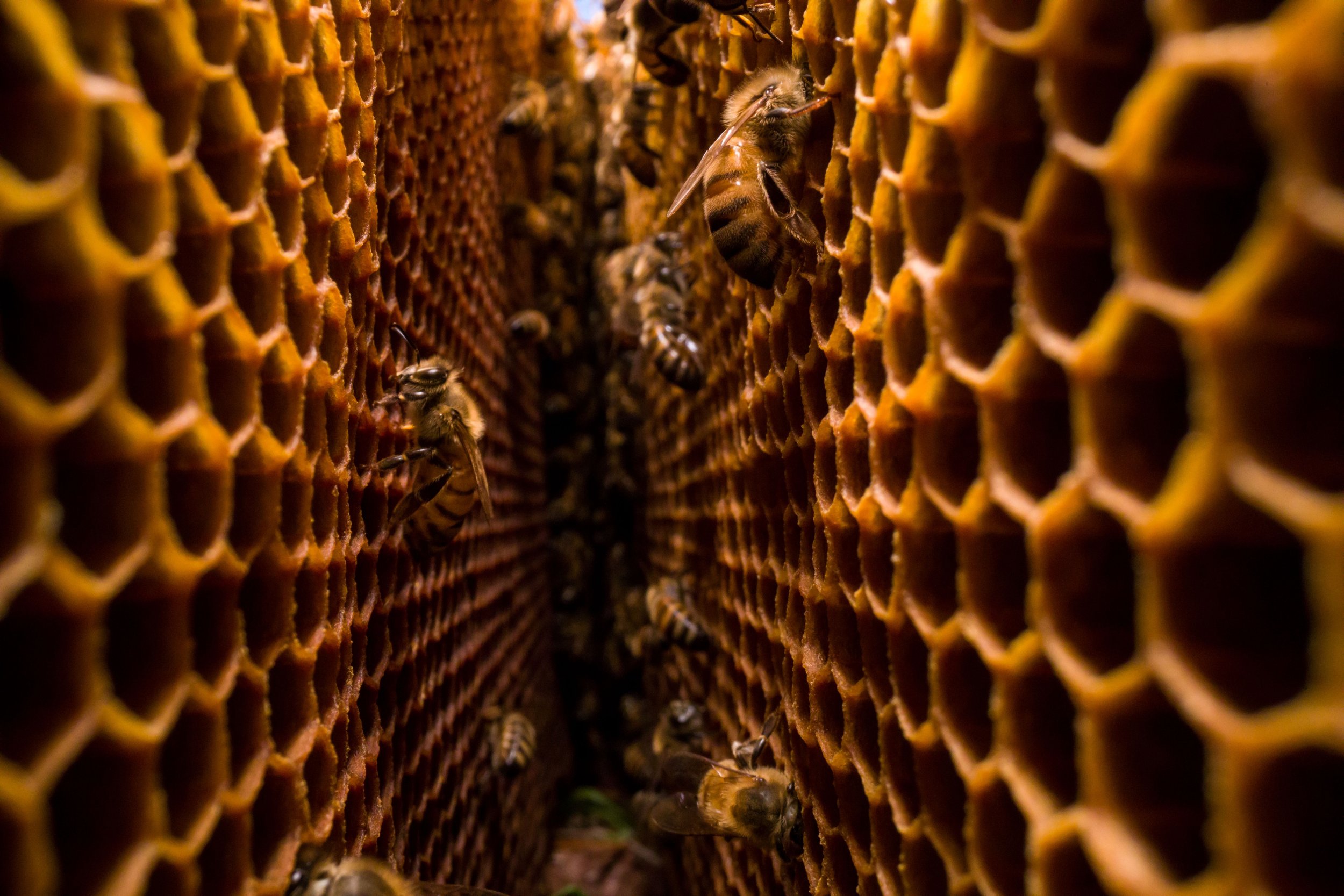Themes
How do structures interact with behavior?
Behavioral Ecology of Ant-Plant Mutualisms
Collective Personality
The study of animal personality and behavioral syndromes are rapidly growing fields in behavioral ecology because they seek to explore and explain the consistencies in behavioral variation within a species. However, much of the work has been focused on personalities of individuals, leaving collective personalities of highly social groups largely uncharted. By viewing ant colonies as singular functioning superorganisms, I study how collective personality is shaped and maintained in Azteca colonies that live in Cecropia trees. Are certain colonies consistently more aggressive and exploratory while others are cautious and reserved? I am currently exploring how colony personality plays a role in this intimate symbiosis - how the behavioral type of a colony might affect the health of its host plant and vice versa (Marting et al. 2018).
Azteca constructor colonies differ consistently and substantially in their response to range of behavioral traits. Here, two similar-size colonies respond to vibrational disturbance from a "flick-o-matic" robot out of the frame below. After 20 seconds, red dots appears in the top left to indicate when the flicking begins.
Soil nutrients and colony behavior
If colonies differ repeatably in their collective personalities, where could this variation stem from? Though the answer is most likely a combination of genes and environment, which factors and the extent to which each is involved must be tested. Soil nutrients could be a likely candidate because they increase the resources available to the colony via plant growth and food body production, but how this influences colony behavior has yet to be tested. Using greenhouse colony transplants and soil nutrient manipulations, further experimentation is underway to test whether this collective behavioral syndrome is a fixed, inherent property of the colony or if it is influenced by resource availability.
Ant - Plant Sociometry
An Azteca colony's nest structure is tied to the Cecropia tree it inhabits, with tree structure determining where the colony nests in the stem's hollow, segmented internodes. However, little is known about how the colony is distributed and organized throughout the tree. Workers chew entrances to the tree's surface and holes between the internodes' septa, creating a nearly complete, internal passageway throughout the length of the tree. To elucidate the colony structure, we harvested colonies and measured the abundance of workers, brood, scale insects, and other structural components for each of several trees' internodes. Analyses are underway to investigate the role that worker genetic diversity and morphometrics may play in colony organization.
Behavior Across Ontogeny
Most of my research has focused on medium-sized trees for standardization. However, colonies are present in all stages of Cecropia growth - from young saplings to towering giants. How does colony behavior shift throughout the growth and development of Azteca colonies? One possibility is that colonies become more active and aggressive as they age and gain experience, because older colonies have more workers, more resources, and thus can invest more in defense. Another possibility is that the same degree of behavioral variation exists throughout ontogeny, that is, you can find a continuum of docile and aggressive colonies at each stage. To test these ideas, Karla Moeller and I measured the personality scores of younger, intermediate, and older colonies. We solved the mature tree height problem by renting a boom lift utility truck to access the tops of the tallest Cecropia trees.
Communication systems
Azteca ants are incredibly fast and efficient at defending their home tree, but the details and dynamics of their communication system remain largely unknown. When encountering a crushed nestmate, ants stand in an upright posture, flicking their heads into the air. This flicking behavior can be seen both at the site where the crushed nestmate was place and at multiple nearby tree entrances. It possibly serves as a propagating visual signal (rare in ants), preparing the colony for combat. In another context, patrolling ants recruit to sites where leaves have been damaged to fend off herbivores. Workers appear to use a combination of short-range and long-range communication strategies to ensure the leaf is heavily guarded within minutes of discovering the damage. Experiments are being conducted to test the dynamics and specificity of this recruitment.
Form and Function of Honeybee Nests
Three-dimensional development of Nest Architecture
Honey bee colonies are superorganisms, with thousands of individuals working together as a single unit. An essential part of the superorganism’s “body” is their honeycomb nest, where bees store food and rear young. New nests grow fast in a 3D spherical shape of parallel combs. How important is this 3D structure – can colonies still function normally if we completely rearrange these growing honeycombs? Surprisingly, they can! It turns out that bees consider the 3-dimensional structure and strategically rebuild certain parts of the nest to emulate the original shape, showing off the superorganism’s power of flexibility.
Check out the manuscript here:
https://royalsocietypublishing.org/doi/10.1098/rspb.2022.2565














